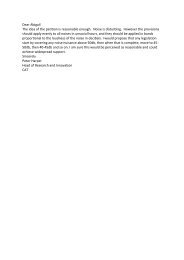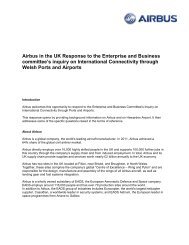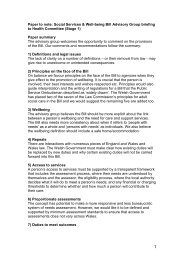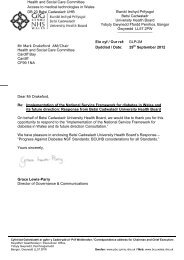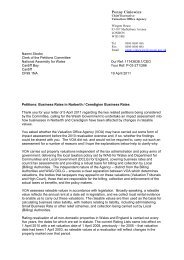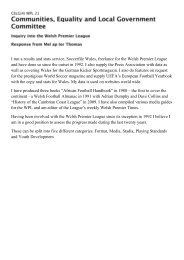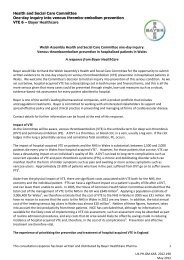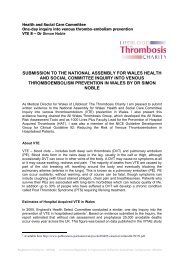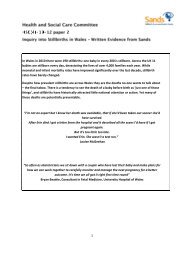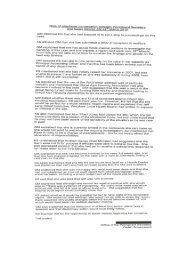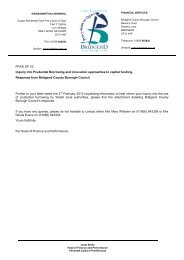Consultation Response - Media 12 - Cardiff University PDF 2 MB
Consultation Response - Media 12 - Cardiff University PDF 2 MB
Consultation Response - Media 12 - Cardiff University PDF 2 MB
You also want an ePaper? Increase the reach of your titles
YUMPU automatically turns print PDFs into web optimized ePapers that Google loves.
Table 4.2 looks at the overall percentage of news items relevant to devolution<br />
that contained confusing or potentially misleading information. This includes<br />
those instances when news items did not include references to the<br />
geographical applicability of a story when it was appropriate to do so. When<br />
we compare BBC television with ITV, Channel 4 and Sky, we find that while<br />
18.4% of BBC television news items about devolved issues contained<br />
potentially misleading or confusing information, 50% of items related to<br />
devolved issues on other television channels did so.<br />
Table 4.2: Percentage of news items about devolution<br />
containing potentially misleading or confusing information (N = 505)<br />
2009<br />
All Items 29.9<br />
All BBC Items 27.2<br />
BBC TV 18.4<br />
BBC Radio 34.1<br />
BBC Online 22.7<br />
Other TV 50.0<br />
We can also see that radio coverage is more likely to be potentially misleading<br />
or confusing about devolved issues than television or online news. This<br />
cannot be explained by the addition of 5 live Breakfast in 2009, since its<br />
proportion of potentially misleading or confusing news items was broadly in<br />
line with radio as whole 13 . The most plausible explanation is that many of the<br />
radio programmes in our sample tend to be structured around recently<br />
developing stories, where there is less time to prepare and where most<br />
reports are live. It is also the case that on radio the same story may generate<br />
a number of news items leading to the proliferation of the same potentially<br />
misleading or confusing assumptions.<br />
Table 4.3.categorises these instances of confusing or potentially misleading<br />
reporting in more detail, recording every instance of such reporting within a<br />
news item (as opposed to simply coding the item itself as containing<br />
confusing or potentially misleading information). In line with the data<br />
presented in Table 4.1, Table 4.3 shows that the most instances of potentially<br />
confusing coverage involved incorrect assumptions about the UK-wide<br />
applicability of a story. Most of the errors in job titles, for example, tend to<br />
follow from these assumptions.<br />
13 Without 5 live Breakfast, the radio proportion of inaccuracies drops by just one per cent.<br />
28



